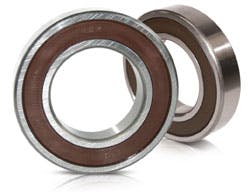Understanding and Addressing the Incompatibility of Greases
Proper lubrication is critical to optimal bearing and machine performance and productivity, and appropriate selection of grease is essential to achieving proper lubrication. But, choosing the right grease is more challenging than it may seem.
Consider these situations: A lab technician tests grease from a problem bearing and finds that although the grease meets every specification, it is not performing as it should.
Operators of a hot-strip steel mill choose a new grease that has been strongly recommended by other mills, but the customers’ complaints about strip quality are increasing.
During a rush production run, a critical motor fails even though it had been lubricated properly, as specified in the maintenance manual.
What happened here? Experts at NSK Americas, which develops bearings and linear motion systems, explain that in every case there had been a recent switch from one type of grease that met the machine manufacturer’s specifications for optimal performance, to another type that also met the appropriate specs. And, in each case the operators had been victims of “grease incompatibility.”
Some greases cannot be mixed with others, even when both types meet the relevant specification. Unless incompatibility is well understood and accounted for in the selection of the greases, switching to a different grease can be disastrous for the machinery and the operators.
Incompatible greases
Incompatibility occurs when a mixture of two greases exhibits properties or performance that are significantly inferior to those of either grease before mixing. Some grease bases are intrinsically incompatible. Different fatty acids and/or additive packages also affect compatibility. To make the situation even more confusing, it’s not uncommon for two types of greases to be manufactured as a mixed-base grease, although they are incompatible when mixed in operation.
Usually, problems are not obvious until the bearing is in use. By then, major problems may already have developed. The best tactic is to know in advance the types of greases that may be used together and those that should not be used together.
Mixing greases in the field
Why doesn’t everyone see more problems when greases are mixed, either deliberately or accidentally? Even a soupy mix of incompatible greases may work for a while when the bearings are in good shape, if shock-loading isn’t too severe, the seals are adequate, and demands are not extreme. And, most instances of incompatibility are brief: a little old grease gets mixed in with a different grease for just a short time.
Making a change safely
What if changing grease is necessary? The NSK technicians list a series of tips that will help to ensure a safe changeover from one grease to another. Incompatible greases don’t have to be eliminated completely; if the user is careful, a little informed attention to detail can prevent problems:
1. Ask the grease suppliers about compatibility: they should provide the information or be willing to run tests that will determine the greases’ compatibility.
2. Use up as much of the old grease as possible before adding the new grease. The best technique is to drain and clean the system completely before changing over to the new grease.
3. Once the new grease is added, grease consumption should be increased temporarily. This will move the interface (the area of grease mixing) through and out of the system as quickly as possible. The increased rate of grease flow also ensures good lubrication and proper sealing, while overly soft grease may be in the bearings.
4. When there is doubt, expect incompatibility, and watch for problems.
When two greases are mixed, the result may be disappointing. Frequently the mixture is much less grease-like than the original, and this can be disastrous. By being aware of the potential for incompatibility and following a sensible procedure when switching greases, a user and supplier can ensure that grease incompatibility will not create serious problems.
